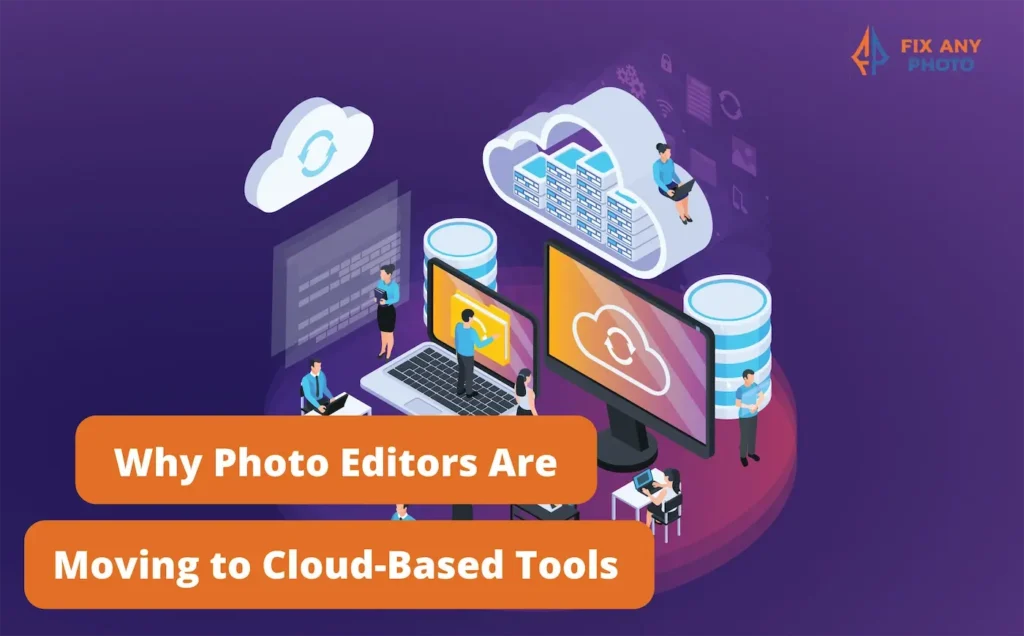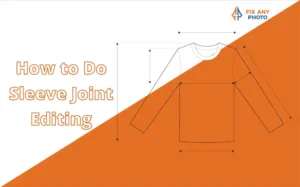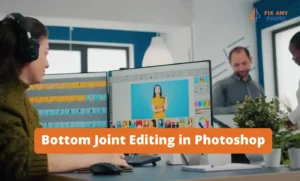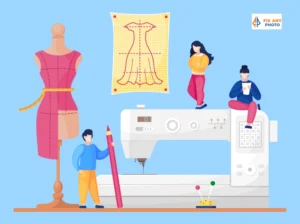Back in the day, photo editors had to save up $500 (or more) just to buy a single Photoshop license. You owned that copy forever, sure—but updates were rare and usually meant paying for an entirely new version.
If you didn’t upgrade, you missed out on new camera support, editing features, and crucial bug fixes.
Now? You can subscribe to Adobe Creative Cloud for as little as $10–50/month.
That subscription gives photo editors access not just to Photoshop or Lightroom, but to an entire suite of professional tools that keep evolving with every update.
No giant upfront investment. No outdated versions gathering dust on your hard drive—just modern, cloud-powered editing freedom.
Cloud Storage + Device Freedom
One of the biggest wins of the subscription shift is flexibility. Thanks to cloud storage, you can:
- Start retouching on your laptop at home.
- Make quick edits from your tablet while traveling.
- Share files instantly with teammates, no matter where they are.
No more being tethered to a single workstation. The cloud makes it possible for creative teams, and even solo editors, to work seamlessly across devices.
Whether you’re at a studio desk, a coffee shop, or on a client’s site, your files and tools move with you.
Why Creatives Love Cloud-Based Editing Tools

Accessibility & Flexibility
One of the biggest reasons editors are embracing cloud-based tools is the freedom they provide. Imagine starting a retouching session on your laptop at home, continuing the work on a tablet during a train ride, and then doing a quick review from your phone before sending it off to a client.
That kind of device-to-device workflow was nearly impossible in the old boxed software era.
This flexibility is invaluable for traveling photographers who can’t always carry their full setup, social media managers who need to respond in real time, and creative teams that want to keep projects moving without delays.
Wherever you are, your files and tools are only a login away.
Collaboration Made Easy
Editing is rarely a solo effort anymore. Whether it’s a design studio or a small photography team, collaboration is the new normal.
Cloud-based tools make this seamless through shared libraries, real-time editing, and version control.
Take Lightroom, for example. Studio teams can sync RAW edits across devices so that one photographer starts color grading while another adjusts exposure.
Everyone works on the same file in real time, without sending bulky attachments back and forth.
Plus, version control ensures that if someone makes a mistake, you can always roll back to an earlier edit.
Always Up-to-Date
Another huge perk is staying current. In the past, buying Photoshop CS6 meant you were stuck with its feature set forever unless you paid for a costly upgrade.
Today, cloud subscriptions deliver continuous updates. That means the moment Adobe releases an AI-powered background remover, new masking tools, or camera RAW support for the latest DSLR, you get them automatically.
No more feeling left behind while the rest of the industry moves ahead.
Why Subscriptions Work for Everyone

Lower Upfront Costs
Cost has always been one of the biggest barriers for creatives. Dropping $699 or more on a single piece of software just wasn’t possible for many students, freelancers, or hobbyists. Subscriptions changed that.
With plans starting as low as $9.99/month, anyone can gain access to professional editing tools without draining their savings.
It’s an approachable entry point that has opened doors for countless newcomers.
Predictable Budgeting
For creative studios, cost predictability is a major advantage. Instead of dealing with unpredictable upgrade cycles and sudden large expenses, subscriptions offer fixed monthly or annual costs.
Managers can plan ahead, allocate resources more effectively, and avoid the financial stress of big one-time purchases.
Democratization of Pro Tools
Perhaps the most exciting change is how subscriptions have democratized access to professional-grade software.
Tools that were once reserved for top agencies and big-budget studios are now available to anyone with a modest monthly budget.
This levels the playing field, allowing independent creators, students, and small businesses to produce work that stands shoulder-to-shoulder with industry leaders.
Adobe Creative Cloud’s Impact
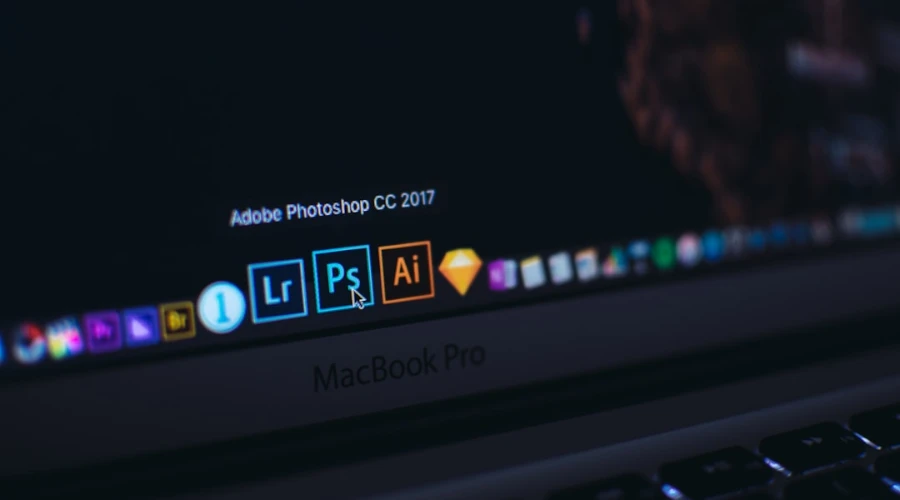
Adobe Creative Cloud is the perfect example of how powerful the subscription model can be.
With tens of millions of subscribers worldwide, it’s clear that creatives across all levels have embraced this shift.
Take the case of a wedding photographer. Years ago, they might have purchased a standalone version of Photoshop and Lightroom.
It worked well, until a new camera came out and their software couldn’t read the RAW files. Upgrading meant shelling out hundreds of dollars again.
Today, the same photographer pays a modest monthly fee and never has to worry about compatibility.
Every update, every new tool, every camera profile is included automatically.
For companies, the impact is just as significant. With Creative Cloud, teams can share cloud storage, access the same project files in real time, and collaborate more effectively.
Designers, photo editors, and retouchers all stay aligned, ensuring consistency across campaigns and faster delivery times.
It’s not just about saving money, it’s about gaining agility and efficiency in an increasingly competitive creative landscape.
The Downsides & Criticisms of Subscription Editing

Never Truly Owning the Software
The most common complaint is that you never really own the software.
Stop paying, and your access disappears instantly, along with the ability to open your project files. For some creatives, that lack of ownership feels like a leash.
Cost Over Time
Subscriptions start cheap, but they add up. Paying $10 a month doesn’t sound like much, but over five years that’s $600 or more.
For freelancers or small studios juggling multiple subscriptions, the long-term costs can rival or even surpass the old one-time licenses.
Internet Dependency
While most apps let you work offline, syncing and collaboration require a stable internet connection.
For creatives working in areas with poor connectivity, cloud-first workflows can be more frustrating than freeing.
Subscription Fatigue
From Adobe and Canva to Capture One, Luminar, and even stock image libraries, nearly every creative tool is subscription-based.
Having to manage so many monthly fees leads to subscription fatigue, where the convenience of the cloud feels overshadowed by financial overwhelm.
Alternatives & Competitors to Adobe’s Subscription Model
Adobe might dominate, but it isn’t the only option.
- Capture One offers both subscriptions and perpetual licenses, making it attractive for photographers who want flexibility.
- Affinity Photo is a one-time purchase with no recurring fees, appealing to those tired of monthly payments.
- Canva Pro and Figma focus on design and collaboration, making them excellent for social media managers and creative teams.
- Pixlr provides lightweight, browser-based editing for quick fixes.
- Luminar Neo combines AI-driven editing with flexible pricing models, targeting creatives who want advanced tools without Adobe’s ecosystem.
Each of these tools fills a niche, whether it’s high-end photography, everyday design, or AI-driven creativity. The market is diversifying, and that’s good news for users.
The Future of Editing in the Cloud
Looking ahead, subscriptions are only the beginning. Here’s where cloud editing is headed:
- AI-first editing tools will automate tasks like background removal, sky replacement, and skin retouching faster than ever.
- Deeper collaboration features will make editing feel like Google Docs for images, with multiple people editing the same file simultaneously.
- Mobile-first editing will continue to grow, with professional-grade edits possible directly from your phone, fully synced to the cloud.
- Subscription bundles may become the norm, offering photo, video, and design tools in one affordable package.
The direction is clear: more integration, more automation, and more collaboration.
Conclusion
Cloud subscriptions have reshaped photo editing, making it more affordable, flexible, and future-proof.
They’ve given creatives the ability to collaborate across devices, stay current with the latest tools, and avoid massive upfront costs.
At the same time, ongoing fees, internet dependency, and subscription fatigue are real drawbacks worth considering.
If you’re a photographer or business looking to enhance your workflow without huge upfront software costs, our editing services can complement your cloud setup, whether it’s background removal, image resizing, photo manipulation, or high-definition image enhancement. We work seamlessly alongside your tools so you can focus on creating.
FAQ’s: The Subscription Shift in Photo Editing
Why do photographers love Adobe Creative Cloud?
Because they’re flexible, affordable, and always up-to-date. You can edit from anywhere, no more waiting for software updates or being tied to one computer.
What’s the main advantage of subscription-based editing software?
You get constant updates and cloud storage without paying thousands upfront. Think of it like Netflix for your creative tools.
Can I still work offline with cloud-based apps?
Yes! Most let you edit offline and sync your changes later. Just keep an internet connection handy for backups and collaboration.
Isn’t paying monthly more expensive in the long run?
It can be, but it’s easier to budget and access premium tools immediately. For many creatives, the convenience outweighs the cost.
What happens if I stop my subscription?
You’ll lose access to the apps, but your files remain safe. You can always restart your plan later.
Why do photographers love Adobe Creative Cloud?
Because it’s a full creative ecosystem, Photoshop, Lightroom, Illustrator, all synced across devices with automatic updates.
Are there non-subscription alternatives to Adobe?
Absolutely! Tools like Affinity Photo, Capture One (with perpetual licenses), and Pixlr offer great one-time or flexible pricing options.
Is cloud editing safe for my files?
Yes, as long as you use trusted providers like Adobe or Canva. They use encrypted cloud servers to protect your data.
How does cloud software help with teamwork?
It’s a game-changer! You can share files, make real-time edits, and roll back to earlier versions without messy email attachments.
What’s next for cloud-based photo editing?
AI-driven tools, faster mobile workflows, and even more collaboration, basically, editing from anywhere with pro-level results.


